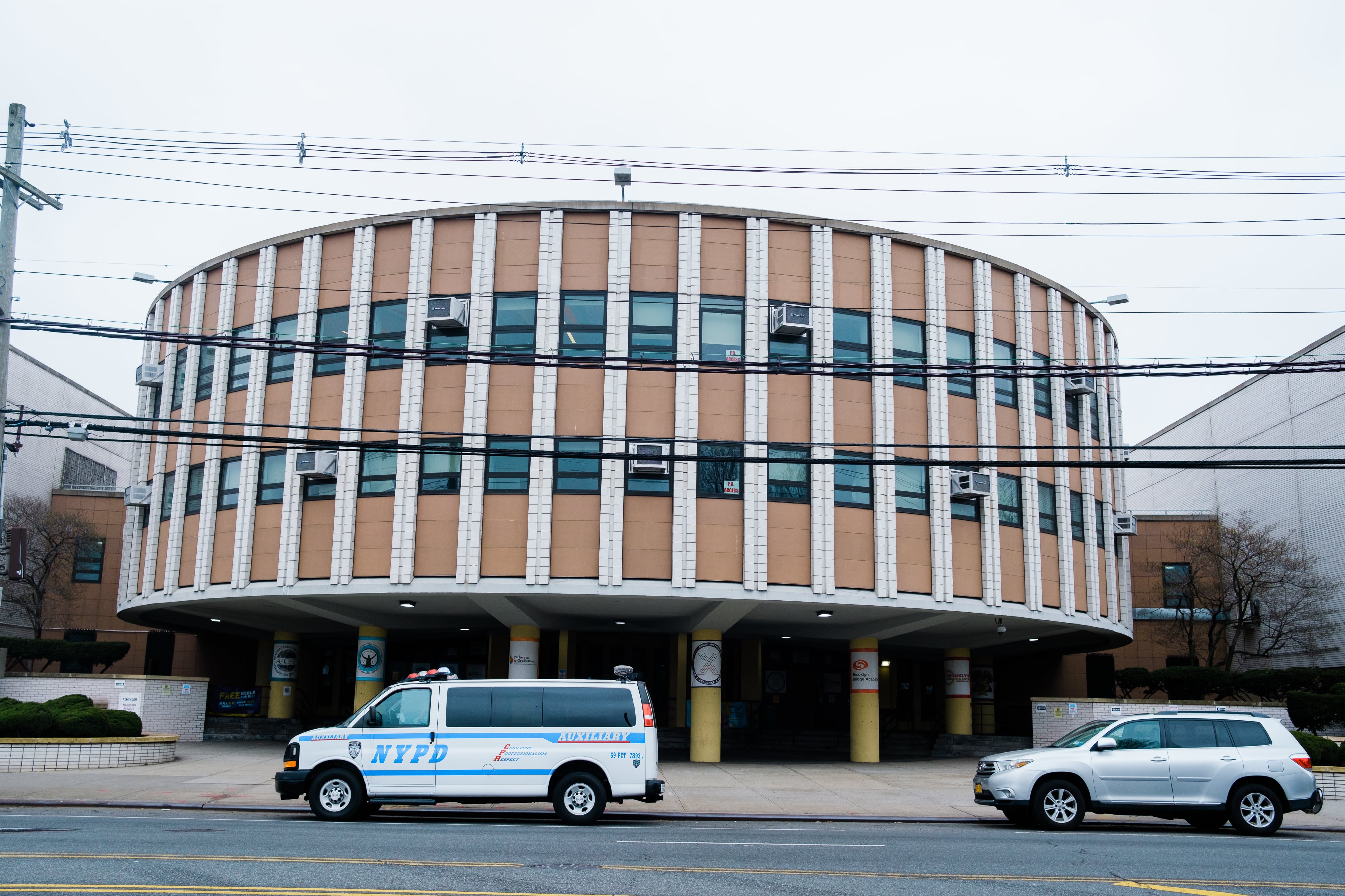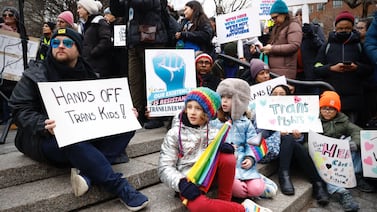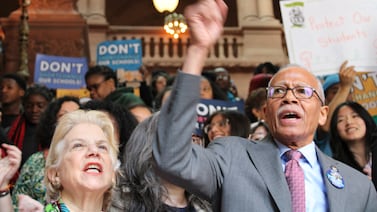To address the growing problem of youth violence, principals from New York City’s 1,600 public schools will soon begin having virtual meetings each week with their local police precinct commanders, education department officials said Tuesday.
Schools Chancellor David Banks has been raising the alarm about the recent spate of killings and shootings involving young people, calling it a “state of emergency” that requires more intervention.
Many of the recent incidents have taken place right outside of schools, after dismissal — a critical time of day when students from multiple schools often spill out into small areas and conflicts can bubble up. The weekly meetings, which Banks announced on a call with school leaders Tuesday morning, are meant to bring together school leaders with the NYPD to discuss safe passage programs, how the police can support schools at after-school events, or how to respond when incidents occur, among other topics, according to an education department spokesperson.
“We’re not having cops running into schools to do some hostile takeover,” Banks said earlier this week on WBAI’s City Watch, discussing the new NYPD initiative. “What we are saying is that 30 minutes or so after school as kids are transitioning from the school building into the neighborhood, we need all hands on deck.”
Banks encouraged school leaders to swap cell phone numbers with their NYPD liaisons, according to principals who were on the call. An NYPD spokesperson said the precinct commanding officer or executive officer will meet weekly with principals to discuss “issues of note,” but declined to share more details.
One principal, who spoke anonymously, applauded the effort to increase and standardize communication between NYPD and schools, but added that there were few “specific details” about how the city planned to keep kids safe. Banks also floated the idea of bringing in parents to help monitor dismissal, a proposal the principal called “highly unlikely. Parents are working, and it’s not parents’ job.”
City officials have made other attempts to respond to the crisis, including a $9 million initiative called “project pivot,” which is sending violence interrupters and other mentors to 138 schools across the city. Banks said that initiative has just gotten underway about a month and a half ago, and is tapping “credible messengers” from the community to work with kids.
The city also recently said it was expanding its number of youth coordination officers — a teen-focused NYPD initiative started under the de Blasio administration — from 350 officers to more than 460, according to reports.
Meanwhile, the number of school safety agents — unarmed NYPD officers stationed full time in schools — decreased by 22%, from around 5,300 in June 2020 to roughly 4,130 last August, according to the state comptroller. Banks has said he wants to reverse that downward trend.
“There’s no one answer,” Banks said. “It takes all of us ensuring that the safety of all of our children is paramount to everything we’re trying to do. You can’t teach them if they’re afraid of being shot every day.”
Scores of public school students have been killed or injured by teen violence this year. Last year, 153 kids were shot in the city, up from 72 in 2017, according to recent NYPD testimony at the City Council.
Just last week, there were two separate shootings in Williamsburg where students were injured outside of school hours.
Seventeen-year-old Nyheem Wright, a student at Coney Island’s Liberation Diploma Plus High School, was fatally stabbed in January shortly after dismissal during a fight, and a 13-year-old has been charged in the murder. The night before, Josue Lopez-Ortega, 15, was fatally shot in the head when leaving the Police Athletic League’s South Bronx Center. Also last month, Bronx 16-year-old Jeremy Eusebio was stabbed and critically injured, allegedly in a feud over a girl, after he got out of his high school, the International School for Liberal Arts.
At the start of the school year, 15-year-old Unique Smith, a student at the Brooklyn Laboratory Charter Schools, was fatally shot after his first day of school in a nearby Downtown Brooklyn park. Violence in that area spurred the local city councilperson to arrange for students to meet regularly with local police.
“This has been a very bad situation. It breaks my heart as I see this happening every day,” Banks said Sunday on WBAI.
City schools have also been dealing with a surge of students showing up with weapons —often for self-protection on their commutes. The number of weapons and other “dangerous items” found on students at school, which can include pepper spray and tasers, more than doubled in the first months of this school year compared to last school year, according to NYPD numbers.
“We have not had a serious uptick of violence in our schools… Our schools are the safe havens,” Banks said. “But what we have had is a major uptick in weapons that have been brought to schools, and when we talk to young people across the city, they’re bringing these weapons, not to do harm to their classmates in school but to protect themselves from what’s going on in the streets after school is over.”
Michael Elsen-Rooney is a reporter for Chalkbeat New York, covering NYC public schools. Contact Michael at melsen-rooney@chalkbeat.org.







